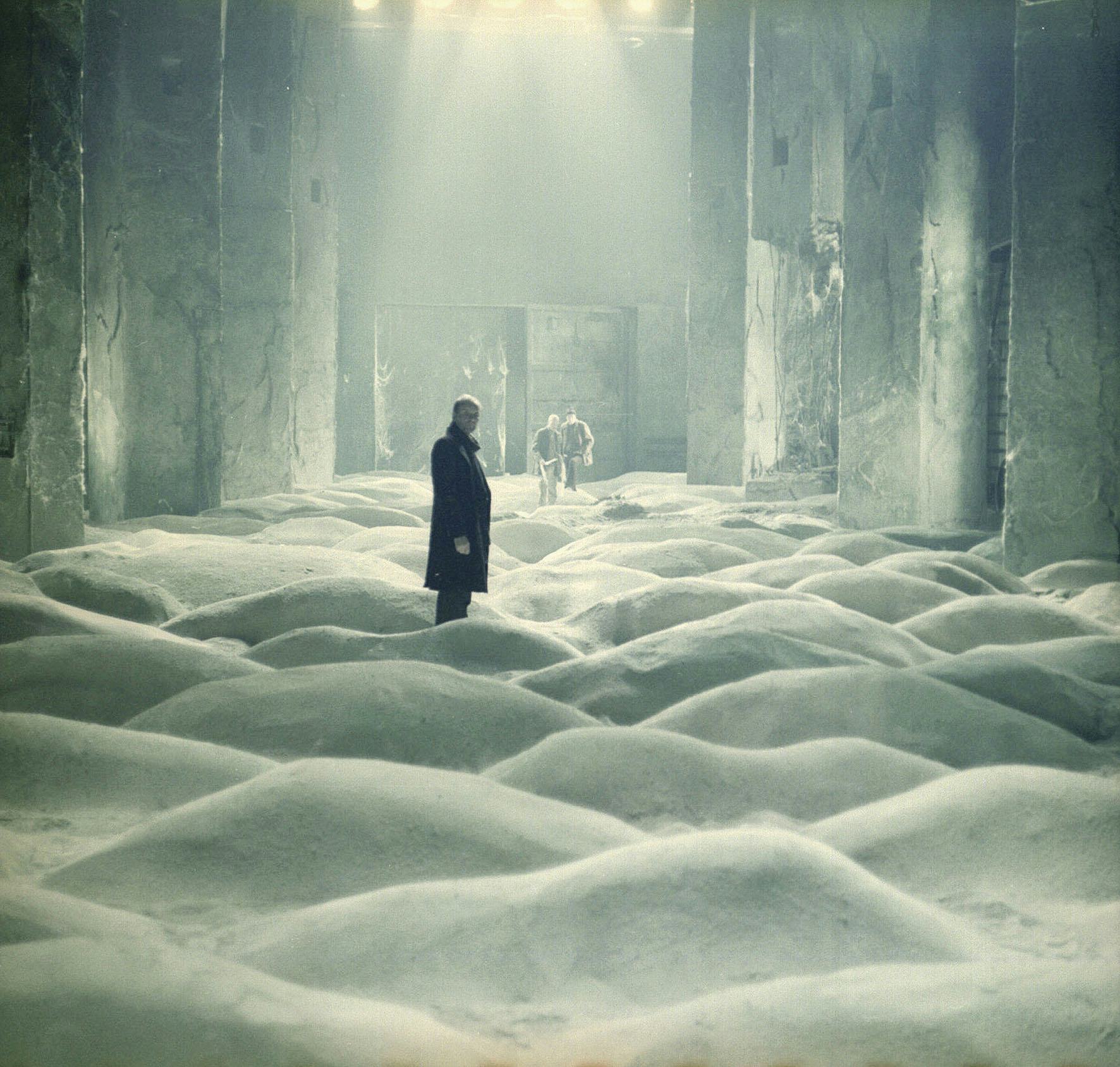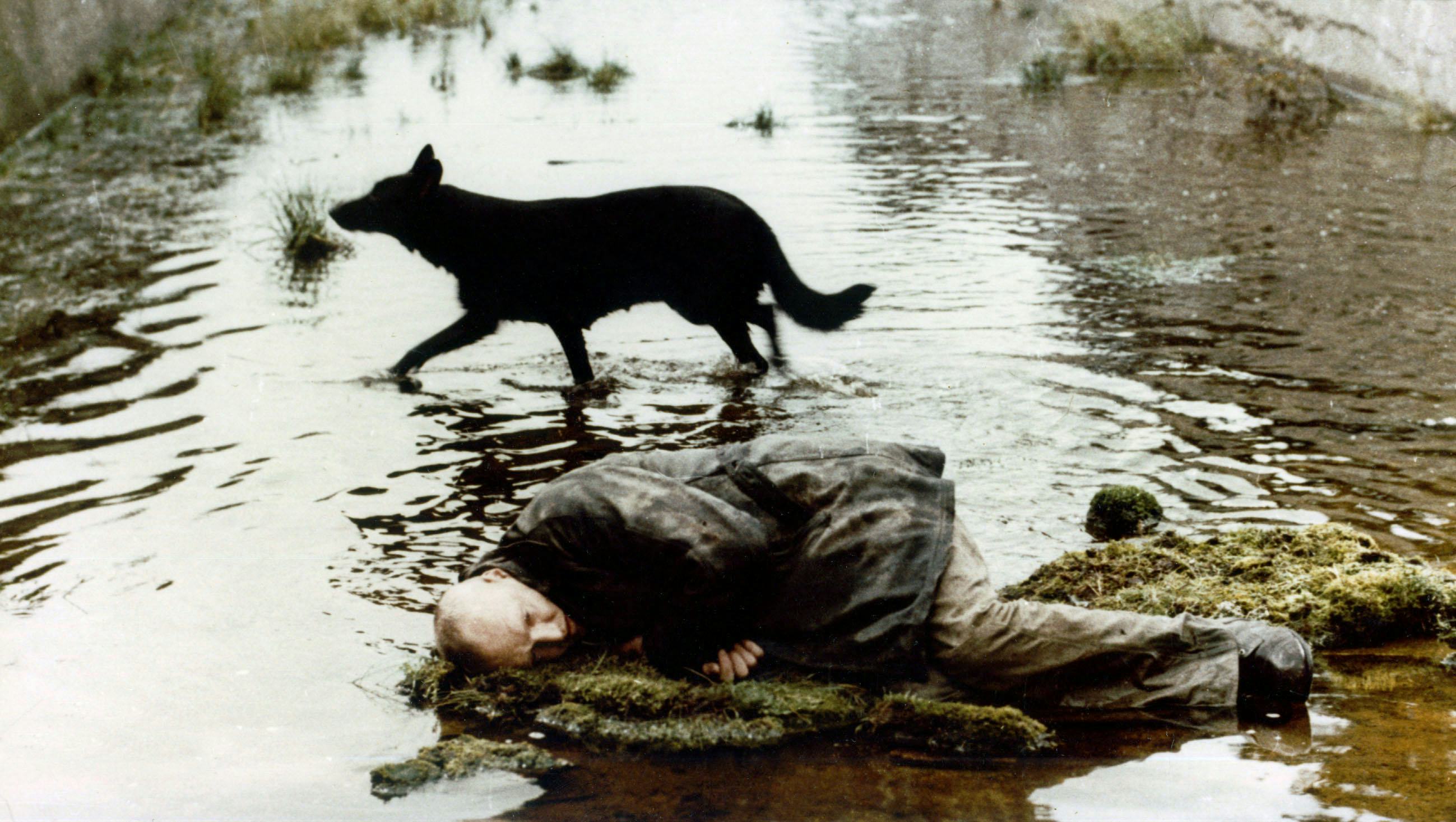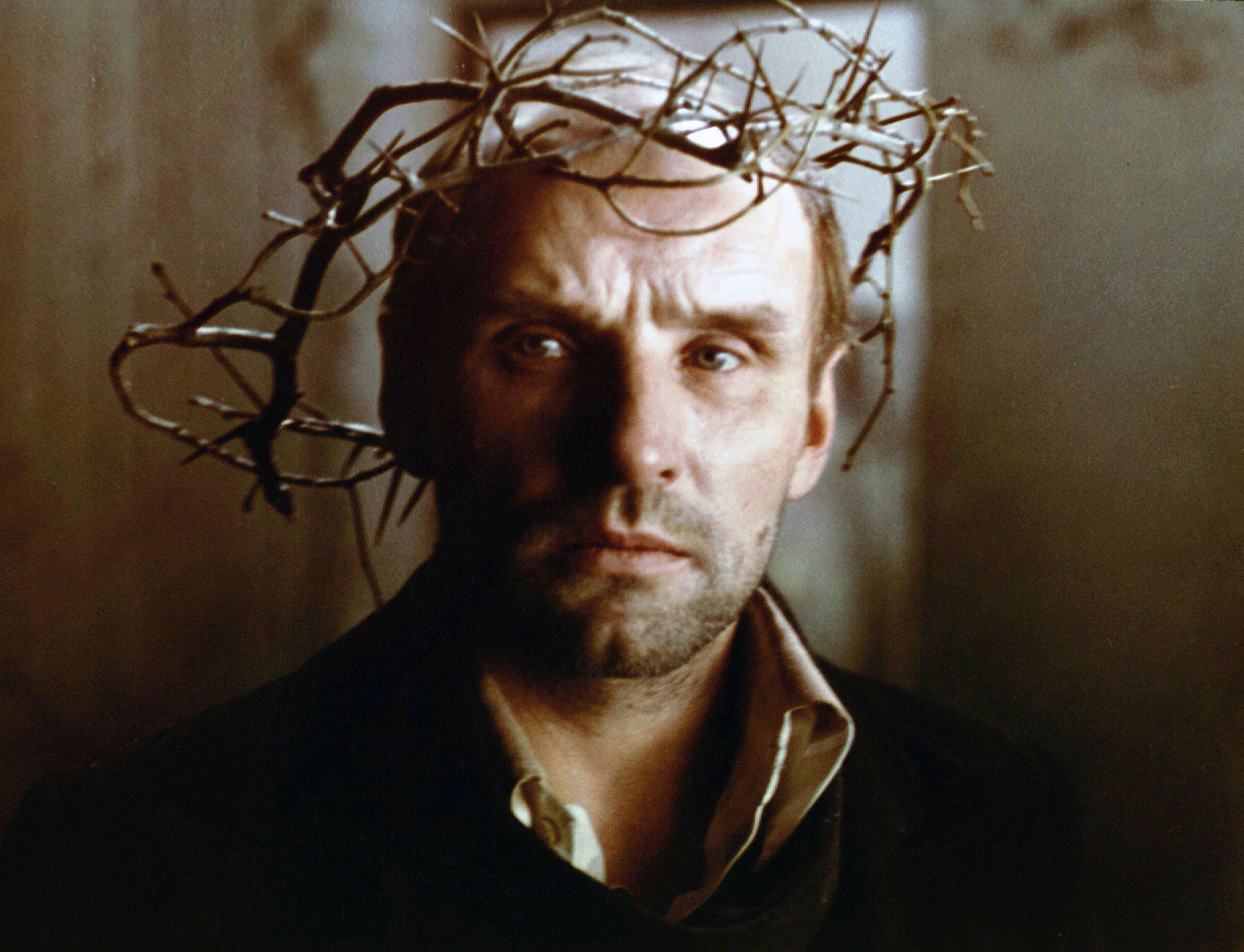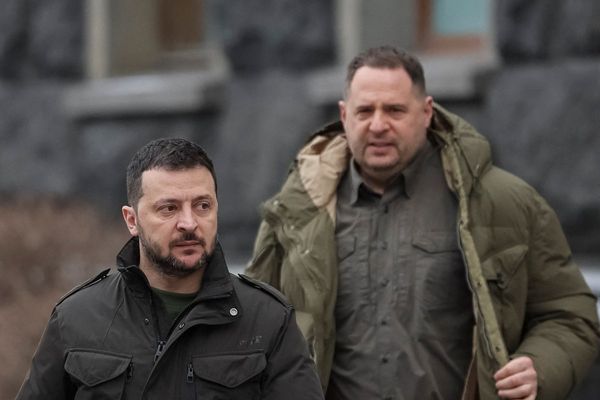
“This is the Zone. It might seem capricious, but at each moment, it’s as if we construct it according to our state of mind.”
Preserved within the sci-fi drama Stalker — between its elliptical cuts that bend space, and in its looming, lengthy takes that extend time — is the very essence of its director, Andrei Tarkovsky. The late Soviet filmmaker has long been hailed as one of the all-time greats, a cinematic poet and philosopher whose thoughts on the medium helped expand our understanding of its capabilities. There is perhaps no greater compendium of his artistic worldview than the eerie and deeply spiritual sci-fi masterpiece that might have slain him.
Released in the USSR in 1979, Stalker would go on to premiere at Cannes in May of 1980, 45 years ago. Its influence can still be felt today (in successors like Alex Garland’s Annihilation), though its emotional power lies in the slow and deliberate unfurling of its straightforward plot, resulting in ruminations that reveal greater complexity. A mystifying area known as the “Zone” — which some believe might have extra-terrestrial origins — is cordoned off by the Soviet military. Before long, this abandoned realm becomes the venue for a strange kind of tourism, wherein a local guide dubbed a “Stalker” (Alexander Kaidanovsky) leads curious pilgrims across a dilapidated, phantasmagorical landscape to a room that grants their deepest desires.
With exteriors shot in the vicinity of an abandoned Estonian hydro power plant, and interiors designed after collapsing 20th century infrastructure, Stalker reflects — through its modern ruins — the era’s nuclear anxieties. Its musings on faith don’t exist in opposition to its man-made locales, but are embedded within its walls, as though the abandoned plants and sewer pipes the characters traverse were once temples built to some modern sociological ideal meant to replace old religions with the new; they’re ruined monuments to humanity itself. This fallout area all but presages what would become of Chernobyl in 1986, and just as pertinently, the foaming wastewater seen on screen proved so toxic that it may have made several members of the crew, including the director himself, fall fatally ill. Although Tarkovsky would go on to make two more films, many, including sound designer Vladimir Sharun, attribute his 1986 demise from bronchial cancer to the chemical waste poured downstream. A similar cancer would claim the lives of several crew members including Tarkovsky’s wife Larisa, and key supporting actor Anatoly Solonitsyn, who plays a writer the Stalker leads through the perilous Zone.

The exact causes of these fatalities are hard to corroborate, but they’ve since become part and parcel of the movie’s legend. It certainly didn’t help that Tarkovsky had to shoot the whole thing twice — after improper film development rendered his first year of outdoor footage useless — resulting in even more prolonged exposure to poisonous conditions. However, this pursuit of greater truth at the cost of his well-being bears a certain irony, given how Stalker plays out.
As the Stalker guides the Writer and a Professor (Nikolai Grinko) according to tightly-set rules laid down by a mentor, the trio’s conversations begin taking introspective and philosophical bents. While the Stalker believes in the ethereal power of the Zone, and treats it with fearful reverence, the Writer and Professor’s cynicism get in the way, and eventually prevent them from entering the room at the end of their journey, each for their own reasons. Rumors of a pilgrim who hoped to resurrect his brother, but whose desire was fulfilled in the form of wealth instead, yield hair-raising interpretations of the Zone as a place that reveals latent desires intrinsic to one’s nature, in ways a subject might not even consciously perceive.
The film, on one hand, embodies the increasingly rigorous struggle to hold on to faith and religion in an increasingly scientific, secular world. This struggle is echoed by Eduard Artemyev’s score, born from the tension between classical Indian and Azerbaijani string instruments, and modern synthesizer sounds, bringing into conflict the theological and technological. The very nature of the Zone, as both invisible and omniscient, suggests a parallel to theistic belief, wherein faith in the Zone is a prerequisite to availing of its gifts and curses. On the other hand, the Zone may as well be a physical manifestation of cinema itself: a place where time and space have no boundaries, where engagement requires the faith of an open heart and mind, and where spectators bring their own beliefs and experiences with them, projecting them into empty spaces. On more than one occasion, the characters deliver both dialogue and silent moments straight down Tarkovsky’s lens while staring into rooms and hallways, as if to force the viewer to personify something beyond the physical.
This placement of the audience, which subverts the traditional mechanics of the cinematic gaze, not only draws us further into the dark confines of the Zone — where the sounds of footsteps and falling water begin to take on futuristic, digital qualities — but for a moment, unmasks the characters themselves. While each performance is reserved, Kaidanovsky, Solonitsyn and Grinko offer, in these isolated moments, glimpses into the terrified souls of the Stalker, the Writer and the Professor, revealing elements of an artist at their most vulnerable, egotistical and cynical, respectively. They are each, to varying degrees, afraid of what they might find as they journey further into the void, and into themselves. Tarkovsky, however, is unafraid to see where this journey takes him.

A key to unlocking Tarkovsky’s introspections through Stalker exists not within the Zone, but outside it, through fleeting scenes with the Stalker’s wife (Alisa Freindlich) and young, disabled daughter Martyshka (Natasha Abramova). The film’s otherworldly use of color is, for the most, rigidly divided, between the sickly sepia wash of scenes set on the Zone’s peripheries, and the more vivid and colorful depictions of the Zone itself, capturing a clash between tradition and modernity. However, Martyshka breaks this mold in subtle ways, as the subject of the rare color scenes outside. It’s possible to draw conclusions about the connection between the Stalker’s family and the Zone’s wish-granting abilities — especially given the movie’s puzzling, abstract climax — but Tarkovsky has rarely been one to use symbolism as a means for didactic ends.
As the characters venture deeper into the Zone, none of them find the clarity for which they seem to be searching — about the state of the world, its paradoxes, and its conundrums. There are no clear answers waiting for them inside the sacred room. Rather, what they find in the Zone, through its legends and disappointments, is a dark form of enlightenment about their own fundamental natures, revealed at the cost of their sanity and safety. In Stalker, there are horrors and miracles, and a thin line between them. There are those willing to accept both these things as part of the human condition, and those willing to accept neither one, in favor of a nihilistic worldview that isn’t primed for faith — whether in god, in or art, in or something that exists beyond words, in the mysterious fabric of celluloid.







